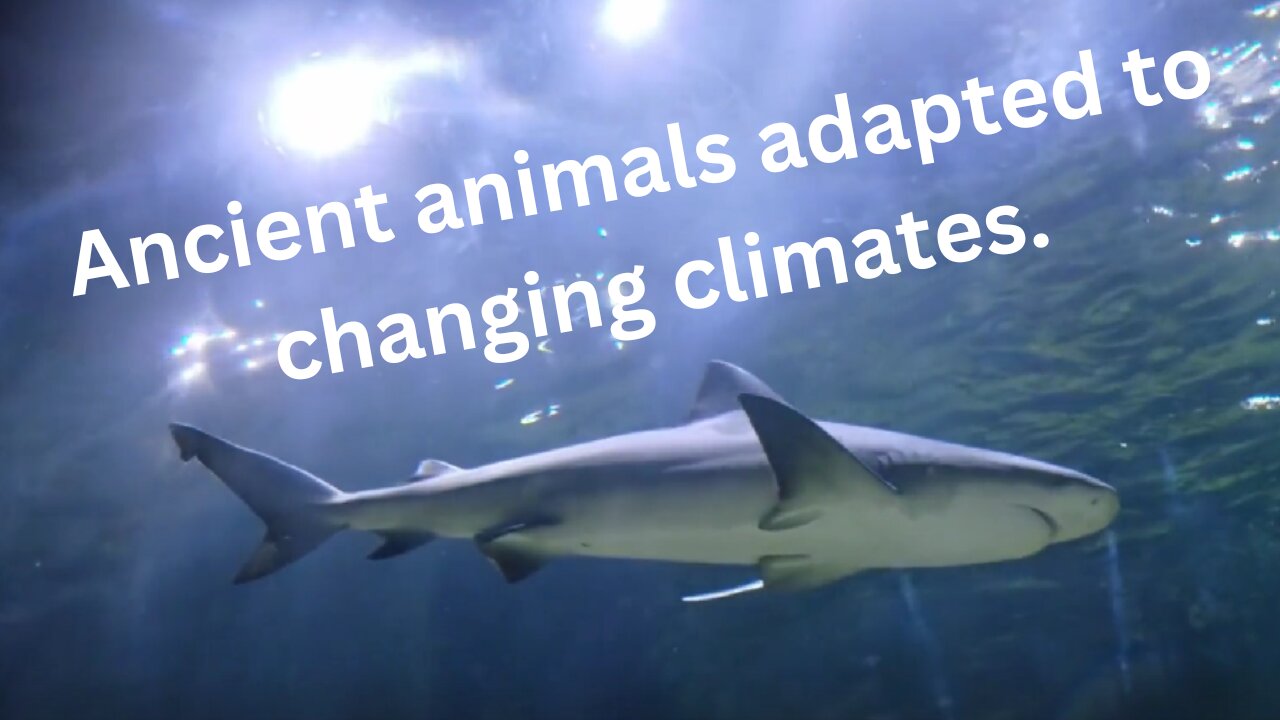Premium Only Content

Ancient animals adapted to changing climates.
Ancient animals adapted to changing climates through a variety of evolutionary strategies. As climates shifted, animals faced new environmental pressures, leading to natural selection favoring traits that enhanced survival in the altered conditions. For example, during periods of glaciation, mammals such as the woolly mammoth developed insulating layers of fat and thick fur to withstand the cold. In warmer periods, some species evolved smaller body sizes to dissipate heat more effectively. Migration was another common response, with animals moving to more hospitable regions as their traditional habitats became unsuitable. Additionally, dietary flexibility allowed some species to survive when their usual food sources became scarce due to climate changes. The fossil record shows that these adaptations were not always sufficient for survival, as many species went extinct when they could not cope with rapid environmental shifts. However, those that did survive passed on their advantageous traits, contributing to the rich diversity of life we see today.
Throughout Earth's history, numerous ancient animals have demonstrated remarkable adaptability to changing climates. For instance, the woolly mammoth, with its thick fur and large size, was well-suited to the cold climates of the Ice Ages. Similarly, the ancestors of modern camels, which originated in North America, adapted to a variety of environments before some species migrated to the Middle East and evolved into the desert-adapted creatures we know today. The great tit bird is another example; it has shown the ability to adjust its beak size over generations to better access food sources in varying climates. Marine life, too, has been resilient; corals, for example, have been found to adapt to warmer waters by favoring symbiotic algae that are less sensitive to temperature changes. These adaptations are not just physical but also behavioral, with many species altering their migration patterns, feeding habits, and reproductive strategies in response to climate shifts. Such evolutionary changes underscore the dynamic nature of life on Earth and its capacity to endure through the ages.
-
 LIVE
LIVE
Russell Brand
1 hour agoTrade War Inferno: Trump Torches China with 124%—Xi Hits Back Hard – SF563
25,932 watching -
 LIVE
LIVE
Sean Unpaved
1 hour agoMike Malone's Shocking Departure From Denver! & Masters Tournament Favorites
444 watching -
 1:03:12
1:03:12
Timcast
1 hour agoChina RETALIATES With 84% Tariff, Trump REFUSES To Surrender, Gen Z IN CRISIS
49.3K56 -
 LIVE
LIVE
Dr Disrespect
1 hour ago🔴LIVE - DR DISRESPECT - WARZONE VERDANSK - THE NUKE
2,797 watching -
 LIVE
LIVE
Caleb Hammer
1 hour agoFinancial Audit's Biggest Nutcase
263 watching -
 LIVE
LIVE
Rebel News
41 minutes agoLiberals smear Poilievre, Carney's first Alberta rally, Canada's tariffs on US autos | Rebel Roundup
642 watching -
 11:09
11:09
Talk Nerdy Sports - The Ultimate Sports Betting Podcast
42 minutes ago4/9/25 - Triple Play: Top Bets Across MLB, NBA, and NHL for April 9
-
 LIVE
LIVE
MG Show
2 hours agoCNN Admits Trump is a “Soaring Eagle”; Ryan Routh Update
966 watching -
 1:17:36
1:17:36
The Rubin Report
2 hours agoGutfeld! Crowd Roars at Douglas Murray’s Reaction to Tariff Market Crash
36.7K31 -
 LIVE
LIVE
The Shannon Joy Show
2 hours ago🔥🔥Last Living Witness! Judyth Vary Baker & The Plot To Kill JFK. LIVE Exclusive With JVB On Her Affair With Lee Harvey Oswald & What She Saw In New Orleans The Summer Of 1963.🔥🔥
345 watching